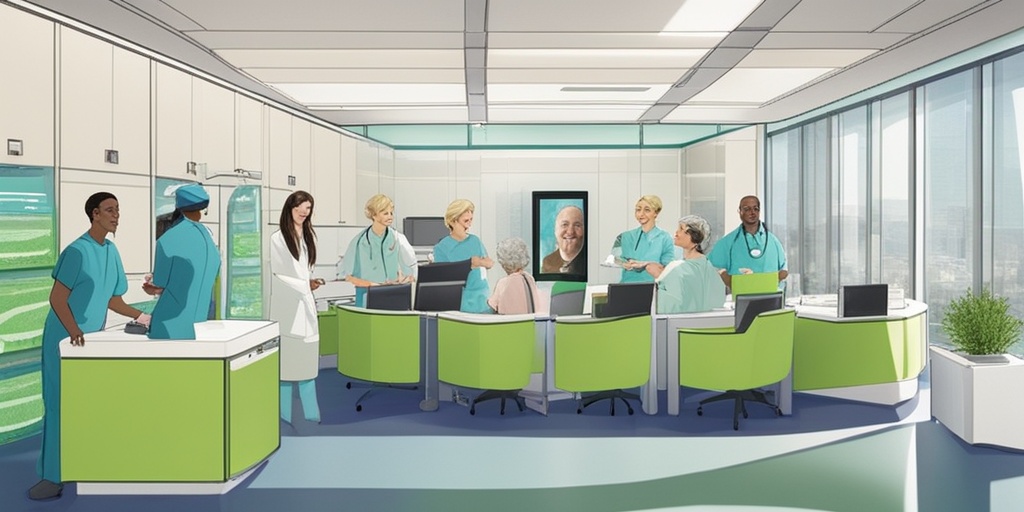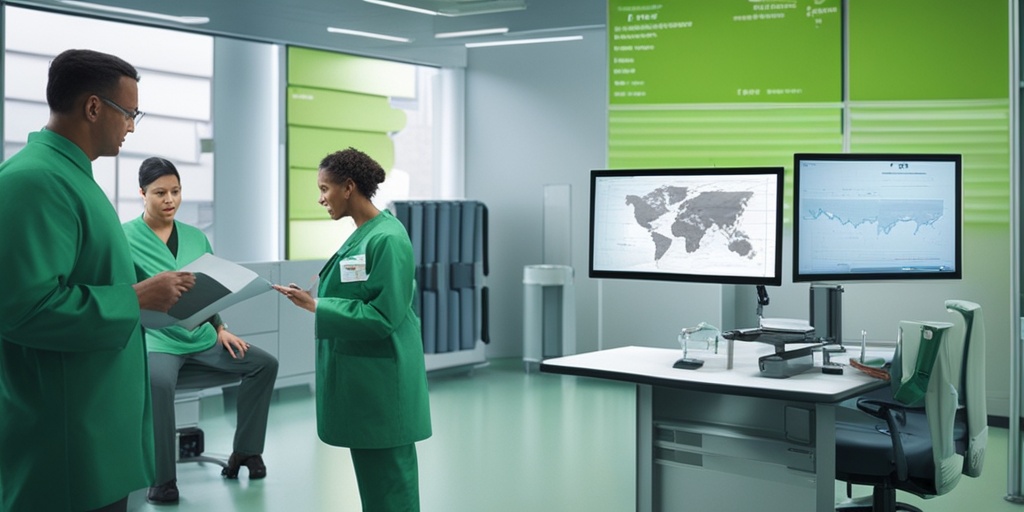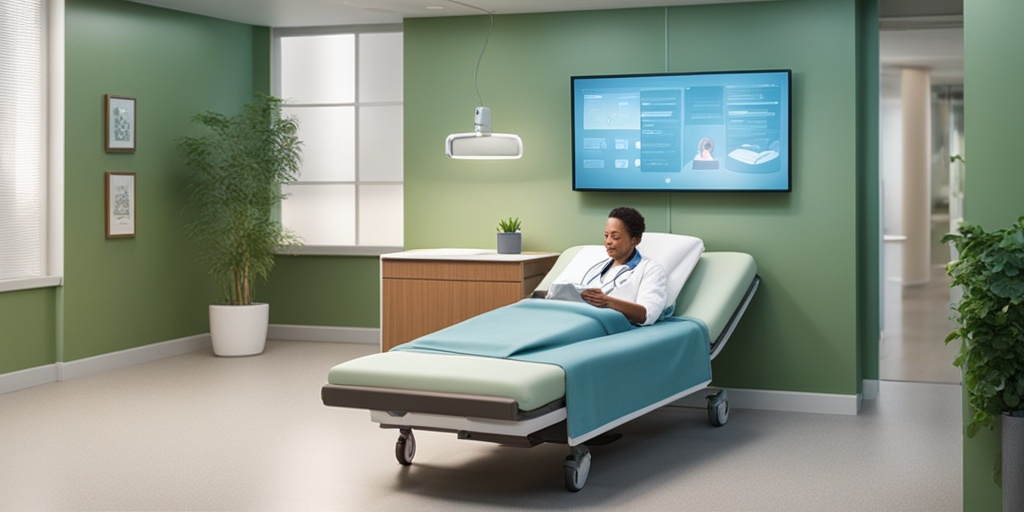“`html
What Is Virtual Colonoscopy?
Virtual colonoscopy, also known as CT colonography, is a non-invasive imaging procedure that uses advanced CT (computed tomography) technology to create detailed images of the colon and rectum. Unlike traditional colonoscopy, which involves inserting a flexible tube with a camera into the rectum, virtual colonoscopy provides a comprehensive view of the colon without the need for sedation or invasive procedures.
The procedure typically lasts about 10 to 15 minutes and involves the following steps:
- Preparation: Similar to a traditional colonoscopy, patients must undergo a specific prep regimen to clear the bowel. This usually involves a special diet and laxatives.
- Imaging: During the procedure, patients lie on a table that slides into a CT scanner. Air is gently pumped into the colon to expand it, allowing for clearer images.
- Analysis: After the imaging is complete, a radiologist examines the images for any abnormalities, such as polyps or signs of cancer.
One of the most appealing aspects of virtual colonoscopy is that it is less invasive than traditional methods, making it a suitable option for those who may be anxious about the procedure. If you’re searching for a virtual colonoscopy near me, many healthcare facilities now offer this service, making it more accessible than ever.
Benefits of Virtual Colonoscopy
Virtual colonoscopy offers several advantages over traditional colonoscopy, making it an increasingly popular choice for colorectal screening. Here are some of the key benefits:
1. Non-Invasive Procedure
As mentioned earlier, virtual colonoscopy is a non-invasive procedure. This means there is no need for sedation or the insertion of instruments into the body, which can be a significant source of anxiety for many patients. The less invasive nature of the procedure often leads to a more comfortable experience overall.
2. Quick and Efficient
The entire process, from preparation to imaging, is relatively quick. The actual imaging takes only about 10 to 15 minutes, and patients can usually return to their normal activities shortly after the procedure. This efficiency is particularly beneficial for those with busy schedules.
3. Detailed Imaging
Virtual colonoscopy provides high-resolution images of the colon, allowing for the detection of polyps and other abnormalities. The advanced imaging technology used in virtual colonoscopy can often identify issues that might be missed during a traditional colonoscopy.
4. Lower Risk of Complications
Since virtual colonoscopy does not involve sedation or invasive instruments, the risk of complications is significantly lower. This makes it a safer option for individuals who may have health concerns that complicate traditional procedures.
5. Suitable for Patients with Certain Conditions
For patients who have had previous surgeries or those with certain medical conditions that make traditional colonoscopy risky, virtual colonoscopy can be a viable alternative. It allows for effective screening without the associated risks of invasive procedures.
6. Cost-Effective Option
While the virtual colonoscopy cost can vary depending on the facility and location, it is often less expensive than traditional colonoscopy. Additionally, many insurance plans cover virtual colonoscopy as a screening tool, making it a financially viable option for many patients.
In conclusion, virtual colonoscopy is a valuable tool in the early detection of colorectal issues. Its non-invasive nature, efficiency, and detailed imaging capabilities make it an attractive alternative to traditional colonoscopy. If you’re considering this procedure, consult with your healthcare provider to determine if it’s the right choice for you. For more information and evidence-based health answers, visit Yesil Health AI. 🌟
“`

“`html
Virtual Colonoscopy Procedure
Virtual colonoscopy, also known as CT colonography, is a non-invasive imaging technique that allows doctors to examine the colon and rectum for abnormalities. This procedure is gaining popularity as an alternative to traditional colonoscopy due to its less invasive nature and quicker recovery time. Let’s dive into what you can expect during the virtual colonoscopy procedure.
What to Expect During the Procedure
During a virtual colonoscopy, you will lie on a table that slides into a CT scanner. The procedure typically lasts about 10 to 15 minutes. Here’s a step-by-step breakdown:
- Preparation: Before the procedure, you will be asked to follow a specific diet and take laxatives to clear your bowel.
- Positioning: You will be positioned on your back and then may be asked to turn onto your side.
- Air Inflation: A small tube will be inserted into your rectum to inflate the colon with air. This helps to get a clearer view of the colon walls.
- Scanning: The CT scanner will take images of your colon from various angles. You may hear whirring sounds as the machine operates.
- Completion: Once the images are captured, the procedure is complete, and you can usually resume normal activities shortly after.
Benefits of Virtual Colonoscopy
There are several advantages to choosing virtual colonoscopy over traditional methods:
- Less Invasive: Virtual colonoscopy does not require sedation or the use of a long, flexible tube, making it a more comfortable option for many patients.
- Quick Recovery: Since sedation is not typically used, patients can return to their daily activities almost immediately.
- Detailed Imaging: The CT scans provide high-resolution images that can help detect polyps and other abnormalities.
However, it’s important to note that if any abnormalities are found during the virtual colonoscopy, a traditional colonoscopy may still be necessary for further examination or biopsy.
Preparation for Virtual Colonoscopy
Proper preparation is crucial for a successful virtual colonoscopy. The goal is to ensure that your colon is completely clean so that the images obtained are clear and accurate. Here’s how to prepare:
Dietary Restrictions
In the days leading up to your procedure, you will need to follow specific dietary guidelines:
- Low-Fiber Diet: About three days before your procedure, switch to a low-fiber diet. This includes avoiding whole grains, nuts, seeds, and raw fruits and vegetables.
- Clear Liquid Diet: The day before your virtual colonoscopy, you will need to consume only clear liquids. This includes water, broth, clear juices, and gelatin. Avoid any drinks that are red or purple, as they can interfere with the imaging.
Laxatives and Bowel Preparation
Your doctor will likely prescribe a bowel-cleansing solution or laxatives to help empty your intestines. Here’s what to keep in mind:
- Timing: Follow the instructions provided by your healthcare provider regarding when to take the laxatives. This is usually the evening before the procedure.
- Hydration: Drink plenty of clear fluids to stay hydrated during the preparation process.
Day of the Procedure
On the day of your virtual colonoscopy, here are a few additional tips:
- Clothing: Wear comfortable clothing that is easy to remove, as you will need to change into a gown for the procedure.
- Arrive Early: Arrive at the facility early to allow time for check-in and any last-minute instructions from your healthcare team.
- Discuss Concerns: If you have any concerns or questions about the procedure, don’t hesitate to discuss them with your healthcare provider.
By following these preparation steps, you can help ensure that your virtual colonoscopy goes smoothly and provides the best possible results. 🩺✨
“`

“`html
Virtual Colonoscopy vs. Traditional Colonoscopy
When it comes to screening for colorectal issues, two primary methods are often discussed: virtual colonoscopy and traditional colonoscopy. Understanding the differences between these two procedures can help you make an informed decision about your health.
What is Virtual Colonoscopy?
Virtual colonoscopy, also known as CT colonography, is a non-invasive imaging technique that uses CT scans to create detailed images of the colon and rectum. This method allows doctors to visualize the interior of the colon without the need for traditional instruments. The procedure typically takes about 10-15 minutes and is performed in a radiology department.
What is Traditional Colonoscopy?
On the other hand, a traditional colonoscopy involves the insertion of a long, flexible tube equipped with a camera into the rectum. This procedure allows for direct visualization of the colon and the ability to perform biopsies or remove polyps during the examination. Traditional colonoscopies usually take longer, often around 30-60 minutes, and are performed in a specialized clinic or hospital setting.
Key Differences
- Invasiveness: Virtual colonoscopy is less invasive compared to traditional colonoscopy, as it does not require any instruments to be inserted into the colon.
- Preparation: Both procedures require bowel preparation, but the specifics may vary. Patients often report that the prep for virtual colonoscopy is less intensive.
- Comfort: Many patients find virtual colonoscopy to be more comfortable since it does not involve sedation, while traditional colonoscopy often requires sedation for patient comfort.
- Findings: Traditional colonoscopy allows for immediate intervention, such as polyp removal, while virtual colonoscopy may require a follow-up traditional colonoscopy if abnormalities are detected.
Cost Considerations
When considering virtual colonoscopy cost, it’s essential to check with your insurance provider, as coverage can vary. Generally, virtual colonoscopy may be less expensive than traditional colonoscopy, but this can depend on various factors, including location and facility. If you’re searching for a virtual colonoscopy near me, it’s a good idea to compare prices and services offered by local clinics.
Risks and Limitations
While both virtual and traditional colonoscopies are valuable tools for colorectal screening, they come with their own set of risks and limitations.
Risks of Virtual Colonoscopy
- Radiation Exposure: Virtual colonoscopy involves exposure to radiation from the CT scan. Although the amount is relatively low, it is still a consideration, especially for those requiring frequent screenings.
- False Positives: There is a possibility of false positives, which may lead to unnecessary follow-up procedures, including traditional colonoscopy.
- Limited Intervention: If polyps or other abnormalities are found, a traditional colonoscopy will still be necessary for further evaluation and treatment.
Risks of Traditional Colonoscopy
- Complications from Sedation: The use of sedation can lead to complications, especially in older adults or those with underlying health conditions.
- Perforation Risk: Although rare, there is a risk of perforating the colon during the procedure, which can lead to serious complications.
- Post-Procedure Discomfort: Patients may experience bloating, cramping, or discomfort after the procedure, which can last for several hours.
Limitations of Virtual Colonoscopy
Despite its advantages, virtual colonoscopy has limitations that should be considered:
- Not a Replacement: Virtual colonoscopy is not a complete replacement for traditional colonoscopy, especially for patients with a history of polyps or colorectal cancer.
- Preparation Requirements: While the prep may be less intensive, it still requires a clear colon for accurate results, which can be a barrier for some patients.
- Availability: Not all medical facilities offer virtual colonoscopy, which may limit access for some patients.
In conclusion, both virtual colonoscopy and traditional colonoscopy have their unique benefits and drawbacks. Understanding these can empower you to make the best choice for your health needs. Always consult with your healthcare provider to determine the most appropriate screening method for you. 🩺
“`

“`html
Interpreting Virtual Colonoscopy Results
After undergoing a virtual colonoscopy, understanding the results can be a crucial step in your healthcare journey. This non-invasive imaging technique, also known as CT colonography, provides detailed images of the colon and rectum, helping to identify abnormalities such as polyps or tumors.
What to Expect from Your Results
Your healthcare provider will analyze the images produced during the virtual colonoscopy procedure. Typically, results are available within a few days. Here’s what you might find:
- Normal Findings: If no abnormalities are detected, your doctor may recommend routine screenings based on your age and risk factors.
- Polyps: These are growths on the lining of the colon. Depending on their size and characteristics, your doctor may suggest further evaluation or removal.
- Other Abnormalities: This could include signs of inflammation, diverticulosis, or even cancer. Your doctor will discuss the next steps based on the findings.
Understanding the Terminology
When you receive your results, you may encounter medical jargon. Here are some common terms explained:
- CT Colonography: Another name for virtual colonoscopy, utilizing CT scans to create images of the colon.
- Polyp: A small clump of cells that forms on the lining of the colon. Some polyps can develop into cancer over time.
- Diverticulosis: A condition where small pouches develop in the colon wall, which can lead to complications if inflamed.
Next Steps After Receiving Results
Once you have your results, it’s essential to have a follow-up discussion with your healthcare provider. They will guide you on:
- Whether further testing is needed, such as a traditional colonoscopy for polyp removal.
- How often you should have screenings based on your results and personal health history.
- Any lifestyle changes or preventive measures you can take to maintain colon health.
Post-Procedure Care and Follow-Up
After your virtual colonoscopy, it’s important to take care of yourself and understand the follow-up process. While the procedure is generally safe and has minimal recovery time, there are still some considerations to keep in mind.
Immediate Post-Procedure Care
Once the virtual colonoscopy prep is complete and the procedure is done, you can typically resume normal activities. However, here are some tips for immediate care:
- Hydration: Drink plenty of fluids to help flush out any remaining contrast material used during the procedure.
- Diet: You may return to your regular diet unless otherwise instructed by your doctor. Start with light meals if you feel any discomfort.
- Monitor Symptoms: Keep an eye out for any unusual symptoms, such as severe abdominal pain or bleeding, and contact your healthcare provider if they occur.
Follow-Up Appointments
Depending on your results, your doctor may schedule a follow-up appointment. This is crucial for:
- Discussing Results: Understanding what the findings mean for your health and any necessary next steps.
- Further Testing: If polyps or other abnormalities were found, a traditional colonoscopy may be recommended for removal or biopsy.
- Routine Screenings: Establishing a schedule for future screenings based on your risk factors and findings.
Long-Term Care and Monitoring
Maintaining colon health is an ongoing process. Here are some tips for long-term care:
- Regular Screenings: Follow your doctor’s recommendations for routine screenings, especially if you have a family history of colon issues.
- Healthy Lifestyle: Incorporate a balanced diet rich in fiber, regular exercise, and avoid smoking to reduce your risk of colon problems.
- Stay Informed: Keep up with the latest research and recommendations regarding colon health and screenings.
By understanding your virtual colonoscopy results and following up appropriately, you can take proactive steps towards maintaining your colon health. Remember, communication with your healthcare provider is key to navigating your health journey successfully! 🩺
“`

“`html
Frequently Asked Questions about Virtual Colonoscopy
What is a Virtual Colonoscopy?
A Virtual Colonoscopy, also known as CT colonography, is a non-invasive imaging procedure that uses CT scans to create detailed images of the colon and rectum. It is an alternative to traditional colonoscopy and is often used for screening purposes.
How is the Virtual Colonoscopy procedure performed?
During the Virtual Colonoscopy procedure, a small tube is inserted into the rectum to inflate the colon with air. This allows for better visualization of the colon walls. The patient then undergoes a CT scan, which takes images of the colon from various angles.
What preparation is needed for a Virtual Colonoscopy?
Preparation for a Virtual Colonoscopy typically involves:
- Following a special diet for 1-2 days prior to the procedure.
- Taking a laxative to clear the bowel.
- Staying hydrated and following any specific instructions given by your healthcare provider.
It’s essential to follow the virtual colonoscopy prep guidelines closely to ensure accurate results.
What is the cost of a Virtual Colonoscopy?
The virtual colonoscopy cost can vary based on location, healthcare provider, and whether insurance covers the procedure. On average, it may range from $300 to $1,000. It’s advisable to check with your insurance provider for coverage details.
How does Virtual Colonoscopy compare to traditional Colonoscopy?
While both procedures aim to detect abnormalities in the colon, there are key differences:
- Virtual Colonoscopy is less invasive and does not require sedation.
- Traditional colonoscopy allows for biopsy and polyp removal during the procedure.
- Virtual Colonoscopy may not be suitable for patients with certain conditions, such as severe diverticulitis.
Discuss with your doctor which option is best for you.
Is Virtual Colonoscopy safe?
Yes, Virtual Colonoscopy is generally considered safe. However, it does involve exposure to radiation, albeit a lower dose than a traditional CT scan. Always consult with your healthcare provider to weigh the risks and benefits.
Where can I find a Virtual Colonoscopy near me?
You can search for a virtual colonoscopy near me by checking local hospitals, imaging centers, or consulting your primary care physician for recommendations.
What should I expect after the procedure?
After a Virtual Colonoscopy, you can typically resume normal activities immediately. Your doctor will discuss the results with you, usually within a few days. If any abnormalities are found, further testing may be required.
Can I find experiences or reviews about Virtual Colonoscopy?
Yes! Many patients share their experiences on platforms like Reddit. Searching for Virtual Colonoscopy Reddit can provide insights and personal stories from others who have undergone the procedure.
“`




